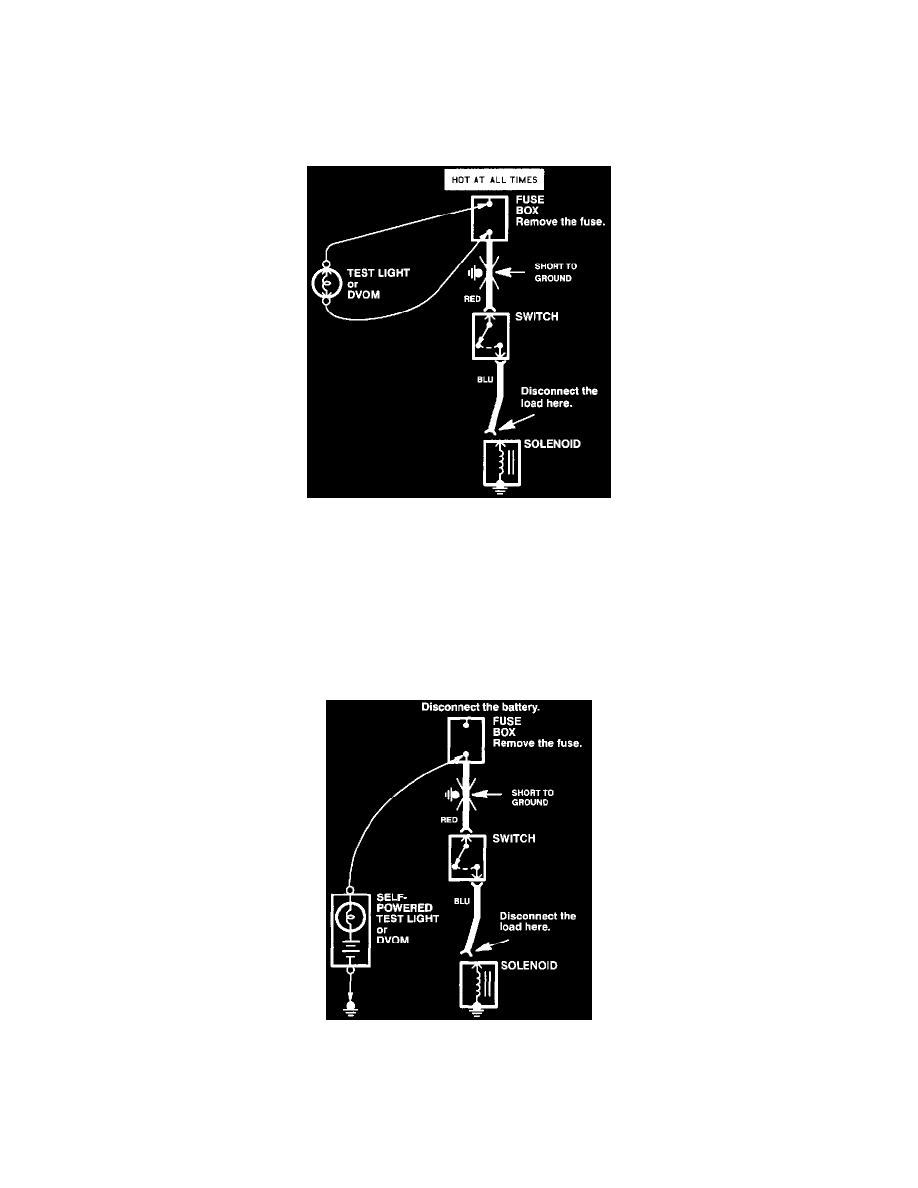TL L5-2451cc 2.5L SOHC MFI (1997)

Transmission Mode Indicator - A/T: Diagnostic Aids
Testing For a Short to Ground
Testing With a Test Light or DVOM
1. Remove the blown fuse and disconnect the load.
2. Connect a test light or Digital Volt/Ohmmeter (DVOM), switched to the appropriate DC volts range, across the fuse terminals to make sure
voltage is present. You might have to turn the ignition switch to ON; check the schematic to see.
Testing For A Short With A Test Light Or DVOM
3. Beginning near the fuse box, wiggle the harness. Continue this at convenient points about six inches apart while watching the test light or DVOM.
4. Where the test light goes OFF, or the DVOM voltage drops to ZERO, there is a short to ground in the wiring near that point.
NOTE: Always use a DVOM on high impedance circuits. A test light may not glow (even with battery voltage present).
Testing With A Self-Powered Tester
1. Remove the blown fuse and disconnect the battery and load.
2. Connect one lead of a self-powered test light or Digital Volt/Ohmmeter (DVOM) (switched to the lowest "OHMS" range) to the fuse terminal on
the load side.
Testing For A Short With A Self-Powered Test Light Or DVOM
3. Connect the other lead to a known good ground.
4. Beginning near the fuse box, wiggle the harness. Continue this at convenient points about six inches apart while watching the test light or DVOM.
5. If the self-powered test light goes on or the DVOM displays a low reading or no reading (ZERO), there is a short to ground in the wiring near that
point.
